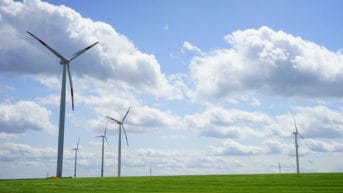Northland Power (TSX:NPI) and Algonquin Power & Utilities (TSX:AQN)(NYSE:AQN) are both working tirelessly to make Earth a greener planet. Both stable stocks offer a dividend yield of at least 5%. Which utility should you invest in?
First, let’s take a closer look at Northland Power and Algonquin.
Northland Power
Northland has more than three decades of experience in developing, building, and operating power assets. It now has about 2,000 MW of net capacity with a presence in Canada, the United States, Mexico, Latin America, Europe, and Taiwan.
For example, Northland has 360 MW and 282 MW of net capacity for two separate offshore wind facilities in Europe, Gemini and Nordsee One, which came online in 2017 with long-term contracts of at least 10 years.
The power producer is working on another offshore European wind project, Deutsche Bucht, located in the German North Sea, which will add another 269 MW of capacity by the end of 2019.

Close to the Pacific Ocean, Northland has been working with local partners on 1,044 MW of offshore wind projects in Taiwan. Northland has a 60% economic interest (about 626 MW) in these projects.
Notably, early this month, John Brace, who was the CEO of Northland Power for 30 years, retired. Brace will continue to serve as a director on the board. Mike Crawley, who was formerly executive vice president, took the helm. The company’s strategic plans will likely stay the same.
Northland stock has been in consolidation mode since 2016. At $22.65 per share as of writing, the stock is trading roughly at the midpoint. So, it’s not a bad place to buy some shares.
The analyst consensus from Thomson Reuters has a mean 12-month target of $27.30 per share on the stock, which represents almost 21% near-term upside potential.
Algonquin Power & Utilities
Algonquin has about US$9 billion of assets with a focus in North America. It has regulated utility operations that generate, transmit, or distribute natural gas, water, or electricity to +750,000 customers in the United States. It also has long-term contracted wind, solar, and hydroelectric facilities with +1,600 MW of installed capacity.
In March, Algonquin entered the global market by investing in Atlantica Yield and forming a joint venture with a Spain-based company, which has a focus on developing and constructing global clean energy and water infrastructure assets. Algonquin’s global operations are estimated to contribute about 8% of its cash flow by 2022. So, it’s currently a small part of the business.
Management targets annualized earnings-per-share growth of 8-12% over the medium term. Therefore, investors can expect Algonquin to continue increasing its dividend by 8-12% per year in the foreseeable future.
Which utility will you buy?
Northland is pretty much turbocharged with international growth. It looks like it’ll focus its capital on growing its global fleet of power assets. It’s also more debt heavy than Algonquin. So, its dividend per share will likely stay the same for the next few years. That said, its yield of 5.3% is competitive.
Algonquin is a more stable stock idea, as it has a large piece of business in a diversified portfolio of regulated utilities. So, between the two utilities, it’s the obvious choice for conservative investors. It offers a yield of about 5%, and its dividend should increase by roughly 8-12% per year for the next few years.







